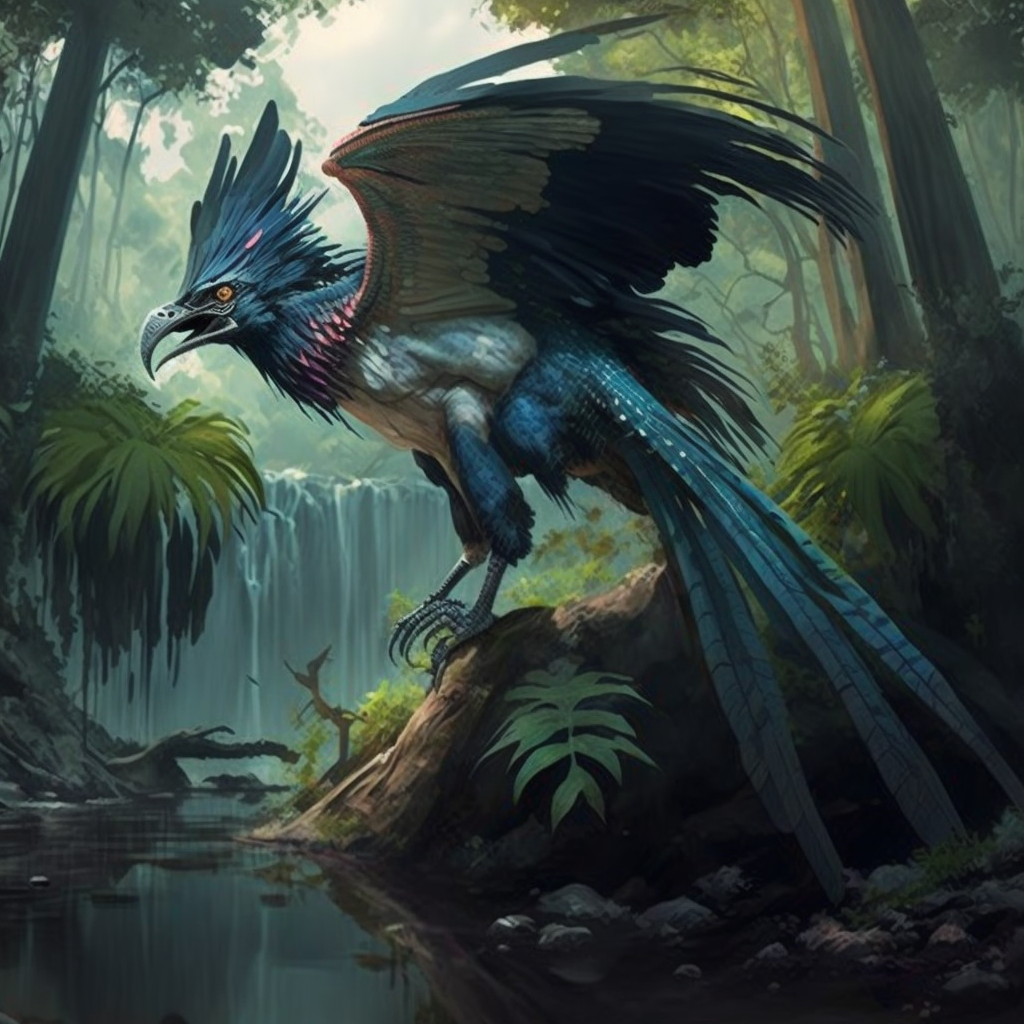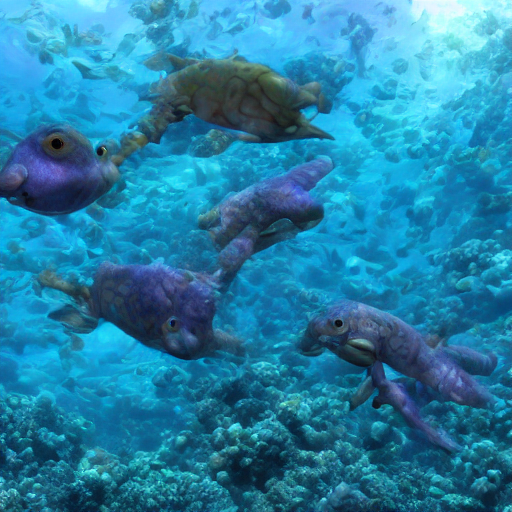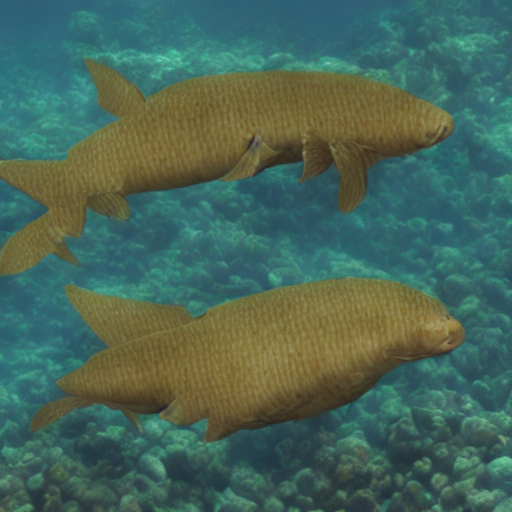

Xolgars are giant birds native to tropical islands. When they hunt, they will pick up a strip of bark from a tree and carry it in their beaks, which they then use to create a makeshift hardnet to trap fish in the water. Once a fish has been caught, the xolgar will fly back up to a nearby tree, unroll the bark, and eat the fish. Because of their size, most other animals in their environments leave the xolgar alone.
Explore an endless universe of ficticious life on NovelGens.





